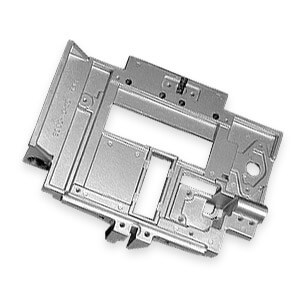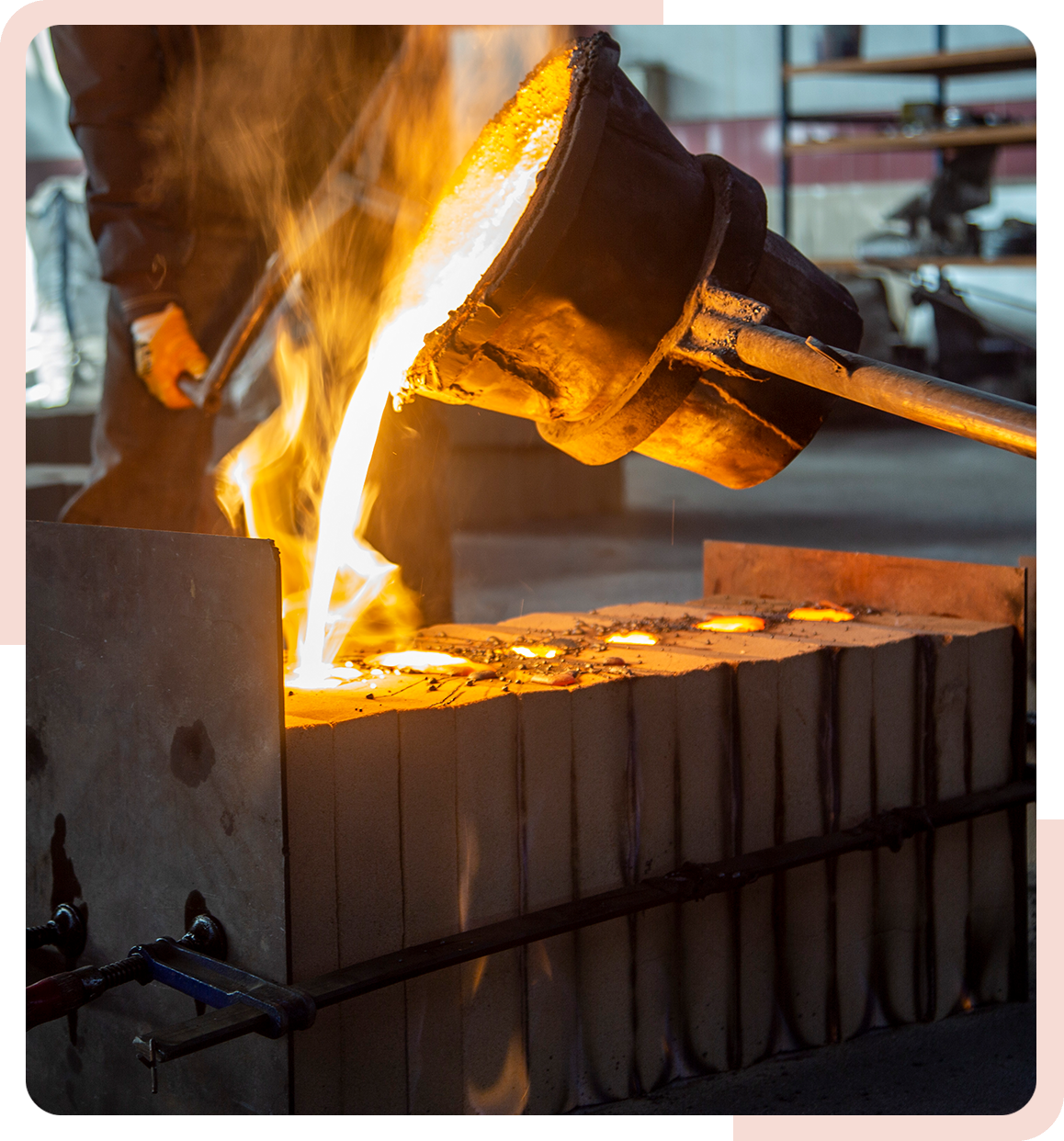Aluminum Casting Explained: Secret Facts and Insights for Market Professionals
Aluminum casting works as an important procedure in modern manufacturing, forming components across various sectors. Its varied techniques, such as sand and die casting, provide to various manufacturing needs. The distinct residential properties of aluminum alloys enhance their applicability, yet tests continue to be in preserving high quality and performance. Understanding these aspects is crucial for industry specialists. What are the current improvements and ideal techniques that can further enhance this process?
Introduction of Aluminum Casting Processes

Key aspects of aluminum casting processes include the prep work of mold and mildews, which might be made from sand, metal, or ceramic products, depending upon the planned use. Furthermore, temperature level control is crucial to assure appropriate melting and solidification of aluminum.
The casting procedure permits detailed layouts and can accomplish high degrees of dimensional precision. As soon as cooled down, the spreadings might go through ending up operations such as machining or surface therapy to meet specific performance criteria. In general, aluminum casting works as a flexible production method, successfully fulfilling the diverse needs of different industries.
Sorts Of Aluminum Casting Techniques
In the domain of aluminum casting, various techniques are utilized to achieve various results. Sand casting methods offer adaptability and cost-effectiveness for complicated shapes, while die casting processes offer high accuracy and efficiency for automation. Understanding these techniques is essential for selecting the ideal technique based on task requirements.
Sand Casting Methods
Sand casting techniques stand for a basic technique in aluminum casting, where sand is utilized as a mold and mildew material to shape molten metal. This procedure includes producing a pattern from the wanted part, which is after that positioned in a sand combination to create a mold and mildew. The sand is compressed around the pattern, and after elimination, it develops a cavity in the form of the part. Molten aluminum is put into this tooth cavity, enabling it to cool and strengthen. One substantial benefit of sand casting is its flexibility; it can accommodate huge components and complicated shapes. Furthermore, the materials made use of are fairly inexpensive, making it an accessible choice for various manufacturing applications in the aluminum market.
Die Casting Processes
Die casting processes are a popular technique for shaping aluminum elements, using high-pressure strategies to require molten steel right into precisely crafted molds. This procedure is particularly favored for its ability to produce intricate shapes with tight resistances and a smooth coating. There are two key sorts of die casting: hot chamber and cool chamber. Hot chamber die casting is ideal for metals with low melting points, enabling faster production rates. Conversely, cold chamber die casting is suitable for higher melting factor steels, requiring a separate melting heater. Both methods enhance effectiveness and decrease material waste, making them essential in automobile, aerospace, and durable goods markets. Comprehending these processes helps professionals pick one of the most appropriate strategy for their details applications.
Material Quality of Aluminum Alloys

Toughness and Resilience
Strength and longevity are important attributes of aluminum alloys that make them suitable for various casting applications. These products display a favorable strength-to-weight ratio, permitting the development of light-weight yet robust components. When it come to tensile toughness, specific aluminum alloys can be crafted to endure significant tons without deforming. This building is particularly vital in sectors such as aerospace and automobile, where efficiency and safety are paramount. Additionally, aluminum alloys commonly keep their mechanical properties under varied temperature level conditions, making sure consistent efficiency. The innate ductility of these alloys additionally enables effective shaping throughout the casting process, making it less complicated to create complex geometries. In general, the strength and toughness of aluminum alloys contribute significantly to their prevalent use in sophisticated applications.
Rust Resistance Characteristics
While aluminum alloys are treasured for their strength and lightweight buildings, their deterioration resistance is one more vital quality that enhances their viability for numerous applications. Aluminum naturally develops a protective oxide layer when revealed to moisture, which assists to avoid more oxidation. This intrinsic residential or commercial property makes aluminum alloys specifically useful in environments susceptible to corrosion, such as aquatic and commercial setups. Furthermore, various alloy make-ups can affect resistance degrees, with particular alloys particularly crafted to enhance this particular. Therapies like plating can additionally improve rust resistance by enlarging the oxide layer. Subsequently, comprehending the deterioration resistance of aluminum alloys is crucial for sector professionals when picking products for tasks calling for toughness and longevity in challenging atmospheres.
Advantages of Aluminum Casting in Production
Aluminum casting offers numerous advantages in production, making it a favored selection for various sectors. One substantial advantage is its light-weight nature, check this which contributes to lowered transportation costs and enhanced energy effectiveness in end products. In addition, aluminum's excellent thermal and electrical conductivity improves functionality in applications requiring heat dissipation or electric transmission.
The material's capability to be cast right into intricate shapes permits style flexibility, reducing the requirement for additional machining processes. Furthermore, aluminum casting displays superior corrosion resistance, causing longer item life-spans and lower maintenance expenses.

Usual Applications of Aluminum Castings
The adaptability of aluminum casting enables its prevalent use across different sectors. Common applications consist of vehicle components, where lightweight and corrosion-resistant parts, such as engine blocks and transmission housings, enhance automobile performance. In the aerospace field, aluminum castings are utilized for architectural elements, providing toughness without including substantial weight.
Furthermore, the electrical sector take advantage of aluminum spreadings in manufacturing enclosures and heat sinks, where thermal conductivity is important. The durable goods industry likewise incorporates aluminum spreadings in items like cookware, furnishings, and ornamental things, integrating looks with functionality.
Moreover, the building and construction market utilizes aluminum spreadings for building aspects, home window structures, and fixtures, which supply longevity and layout adaptability. On the whole, the diverse applications of aluminum castings emphasize their importance in contemporary manufacturing, contributing to improvements in efficiency and product design across multiple areas.
Technologies and Technological Advancements
As sectors continue to develop, technologies in aluminum casting technology are changing production procedures and product capacities. Developments in 3D printing and additive manufacturing have actually allowed the development of intricate geometries that were previously impossible to accomplish with typical methods. These innovations permit for rapid prototyping, decreasing lead times and costs.
Additionally, enhancements in mold style and products have actually improved the casting procedure by enhancing efficiency and decreasing waste. The combination of wise production methods, such as IoT tools and real-time information analytics, permits for better surveillance and optimization of manufacturing parameters, causing greater high quality outputs.
Furthermore, developments in aluminum alloys supply enhanced toughness, deterioration resistance, and lightweight properties, satisfying the expanding needs in aerospace and auto markets. Jointly, these advancements are not only improving performance yet likewise meeting the extensive requirements of modern-day design applications.
Finest Practices for Quality Assurance in Aluminum Casting
Ensuring high-grade results in aluminum casting requires adherence to best methods that incorporate various phases of the production process. Comprehensive product examination is important to validate the quality of aluminum alloys made use of, as pollutants can substantially influence the last product. Applying specific melting and pouring techniques minimizes defects; preserving optimal temperatures stops oxidation and advertises uniformity.
Additionally, mold and mildew design plays an essential function; making use of computer-aided style (CAD) can enhance precision and decrease human mistake. Regular monitoring of the cooling procedure is crucial to prevent bending and shrinking. Furthermore, making use of non-destructive testing techniques, such as ultrasonic or X-ray examinations, aids recognize interior flaws without damaging the parts.
Developing a feedback loophole with engineers and drivers promotes continuous enhancement, guaranteeing that quality control steps progress along with technical developments. By complying with these finest methods, makers can enhance the integrity and efficiency of aluminum spreadings.
Regularly Asked Concerns
What Are the Ecological Impacts of Aluminum Casting?
The ecological influences of aluminum casting consist of significant energy usage, greenhouse gas exhausts, and possible water pollution from factory operations. Furthermore, bauxite mining for aluminum ore can lead to environment damage and dirt destruction.
How Does Aluminum Casting Compare to Various Other Metal Casting Procedures?
Aluminum casting generally offers advantages in lightweight elements and corrosion resistance compared to various other procedures, such as iron or steel casting, which may supply better stamina yet lead to much heavier and less corrosion-resistant products. - Aluminum Foundry
What Prevail Problems in Aluminum Castings and Their Causes?
Common issues in aluminum castings include porosity, contraction, and incorporations. Reasons commonly come from improper pouring techniques, poor mold and mildew style, or contamination of the liquified metal, influencing the last product's integrity and performance.
What Safety and security Precautions Should Be Taken During Aluminum Casting?
Throughout aluminum casting, crucial security preventative measures include putting on safety equipment, making sure appropriate air flow, preserving a tidy work area, taking care of molten steel with care, and complying with well established methods to lessen risks of burns, breathing risks, and mishaps.
Exactly How Can I Improve the Efficiency of My Aluminum Casting Operations?
To improve performance in aluminum casting operations, one ought to optimize mold and mildew design, improve product handling, utilize automated processes, perform routine upkeep on equipment, and buy worker training pop over to this web-site to boost abilities and efficiency.
Various methods exist, aluminum casting includes numerous primary procedures that provide to different applications and needs. Key components of aluminum casting procedures consist of the prep work of molds, which might redirected here be made from sand, metal, or ceramic materials, depending on the intended use. Sand casting strategies stand for a basic approach in aluminum casting, where sand is utilized as a mold product to form liquified metal. As sectors continue to evolve, advancements in aluminum casting technology are changing manufacturing procedures and product capabilities. Making certain top quality outcomes in aluminum casting calls for adherence to ideal practices that encompass different stages of the production procedure.